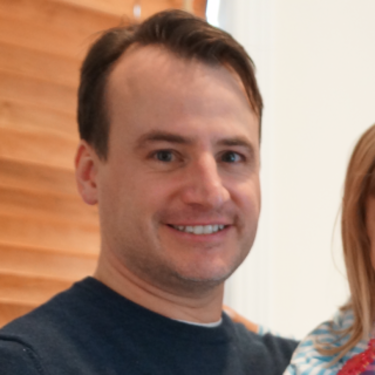At a time when workforce shortages define the labor market for anesthesiologists, practice groups are faced with challenges of recruitment and retention. Within my own academic practice in a large metropolitan area, a group of faculty anesthesiologists decided to band together in a Practice Management Committee (PMC) to figure out what makes anesthesiologists happy. In fact, before I even joined the department, the PMC existed as a group with no direct authority whose function was to consult with administration and liaise with stakeholders on all matters of discontent and provide ideas for improvement. In former years, when the PMC was known as the Clinical Practice Committee (CPC), it had even helped structure the department in beneficial ways that had become so integral to the identity of the department that few even remembered that it was CPC that had been responsible.
As a group, we members of PMC have found ourselves in an interesting era of record salaries and record dissatisfaction. Compensation for anesthesiologists has risen nationwide due to a surge in demand for services that has outpaced the available workforce. While that may seem a boon to the profession, it has also led to many chasing a better deal, and thus higher turnover than recently experienced. Furthermore, expanding the workforce to ease shortages has proven challenging in the face of insufficient funding for residency training and an aging and retiring workforce. Other, perhaps less well known, causes have been highlighted in recent anesthesiology literature, specifically high rates of burnout in the profession and, as the American Society of Anesthesiology cites, anesthesiologists being disproportionately affected by harassment, incivility, and disrespect in the workplace. Together these forces have led to a complex interplay of factors that have left many departments and private groups scrambling for anesthesiologists despite offering sweetheart deals and generous compensation packages.
It has been said that there are only two real forms of compensation for anesthesiologists: time and money. This premise has given PMC some clarity for problem solving. For example, when we first encountered an unprecedented shortfall in nurse anesthetist staffing, precluding us from being able to cover all anesthetizing locations, we successfully pushed for a department-funded form of internal per diem for our faculty. This proved both popular and effective. Though, when it was clear that this would still not be enough, we also began to pull those faculty who were given nonclinical time (i.e., academic or administrative time) back into the clinical pool as needed. PMC was lauded for these appeals to share clinical burden equitably and increase compensation commensurate with additional workload. Subsequently, PMC began helping with an initiative to distribute a monthly anonymous poll to faculty to solicit comments, feedback, and questions about any topic that they did not feel comfortable asking in a public setting or directly to department leadership. The goal was to make a more desirable workplace for existing and prospective faculty. After screening for civility and HR compliance, the poll responses were read aloud and addressed at our monthly faculty meetings. Even in the face of PMC’s successful initiatives, the responses were overwhelmingly negative on a broad range of topics, almost always including gripes about fairness of compensation when accounting for work distribution. This begged the question: Are time and money ever enough?
A recent podcast on anesthesia practice management suggested that the answer to anesthesiologists’ happiness is more nuanced. For example, being able to reduce risk exposure at work may significantly improve job satisfaction and a sense of long-term career viability. The repeated expectation to care for high-risk patients having high-risk procedures, perhaps while simultaneously covering other cases and working long hours, may stress an anesthesiologist in a way that time off and additional pay cannot alleviate. Risk aversion is the understood but often unspoken factor when an anesthesiologist selects a job, regardless of pay or time off, that caters to a healthy patient population or only involves “bread and butter” procedures. When employers need to cover undesirable shifts, one might argue that they just need to pay more, but as the podcast points out, the power of financial incentives diminishes over time in a way that is not sustainable for many practices. A perceived unequal share of medically challenging or physically exhausting casework can also stoke infighting even when highly compensated monetarily or temporally (e.g., with a post call day). Another key point in the podcast was that anesthesiologists want to have a say in their workplace. Personally, I think the desire goes beyond wanting to say something freely in an anonymous poll, which is a temporary relief valve at best. This is about expressing oneself and manifesting change — this is agency.
I would venture to say that no academic anesthesia department is a democracy. The individual wills of the faculty members or those representatives on the PMC do not ultimately determine departmental policy or practice. However, many have noted that our department can feel like a small town where our work lives play out in much the same way our personal lives do — our colleagues become our work family, who we may spend more time with than our actual family. Together we share laughter and tears, births and deaths, gossip and politics. We care for human beings while remaining human beings ourselves, and being human comes with the desire to have a voice and be heard. So, while the traditional administrative structure of the department (of the entire hospital system) is intact, as regimented as a military hierarchy with ranks and all, we do sometimes exist as a microcosm of democracy. In this light, amplifying our voices matters not only for the happiness of individual anesthesiologists or the bottom line of one department but also for the health of our anesthesiology community.
In the end, anesthesiologists seemingly want everything — time off, more money, protection from litigation, a civil workplace, a say in their practice — perhaps in varying amounts from person to person or at different phases in their career. But I think underpinning it all is a desire to restore professional dignity, something we’ve maybe never fully had, from its degradation in the production pressures of the current market. An anesthesia group that puts its focus here may find answers to the question in much simpler terms than expected.
What do you believe is the key to long-term job satisfaction for anesthesiologists? Share in the comments.
Jacob Jackson, MD, is an anesthesiologist in New York, NY. He specializes in thoracic anesthesia at Memorial Sloan Kettering Cancer Center and is the current chair of his department’s Practice Management Committee. He enjoys running, hiking, swimming, cycling, and most of all, spending time with his family at his home in Harlem. The views expressed in this commentary are his own.
Image by AMR BO SHANAB/SCIENCE PHOTO LIBRARY / Getty







